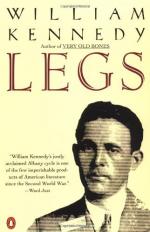|
This section contains 136 words (approx. 1 page at 300 words per page) |

|
The closest parallel to Kennedy's novel in the manipulation of Prohibition-era historical figures through the fiction is E. L. Doctorow's treatment of Diamond's contemporary and rival, Dutch Schultz in his 1989 work Billy Bathgate. Another recent work, nonfiction, Nicholas Pileggi's Wiseguy, captures the gangster ambiance of Legs without attempting to convey the same sense of style and social malaise that is so important to Kennedy's work. Mario Puzo's The Godfather (1969) and The Sicilian (1984) are more directly relevant to Legs in their treatment of the ethnic and socioeconomic milieus of the 1920s and 1930s. Since Gorman sees it in the context of his own personality, The Great Gatsby (1925) provides another view of the malaise of American society during Prohibition. Perhaps the earliest significant fictional treatment of Prohibition gangsters is W. R. Burnett's Little Caesar, (1929).
|
This section contains 136 words (approx. 1 page at 300 words per page) |

|




